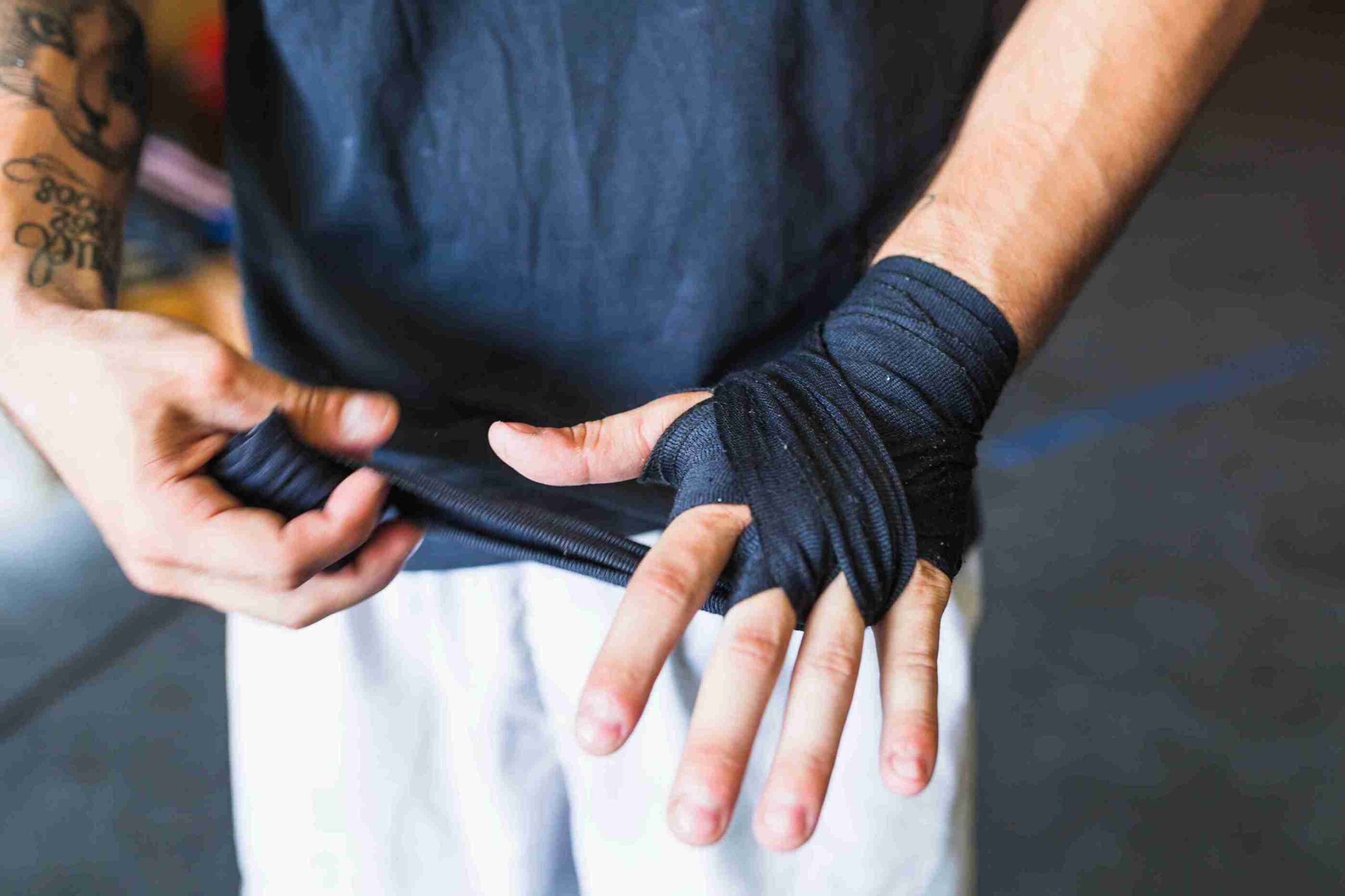Colles fracture is one of the most frequent distal forearm fractures in adults. It most frequently occurs after a fall on the outstretched hand. There are several types of this injury, but the most common involve the distal radius, one of the largest forearm bones. Because of this, the broken fragment of the bone tilts upward. It is an uncomfortable condition that must be treated immediately to recover properly and prevent further health issues. As part of this comprehensive learning, we will look at the etiology, signs, diagnostic tests, management, and ways of preventing Colles fractures. Furthermore, some tips on how to improve your lifestyle, as well as a questions and answers section, will be included in this article.
Understanding Colles Fracture
A Colles fracture is the break of the distal end of the radius, which is the longer of the two bones in the forearm. This injury is named after Abraham Colles, who wrote about it in 1814. It most often happens when a person attempts to steady their fall with their hands, resulting in the wrist bending backward. This type of fracture particularly affects older adults, especially women who suffer from osteoporosis, and if well managed, its complications can be severe.
Anatomy of the Wrist
The wrist is a multi-part joint composed of multiple small bones called carpals and the ends of the radius and ulna, the two bones of the forearm, along with several ligaments and bands of tough flexible tissue called tendons. A common fracture is seen in the radius, as this bone bears the brunt of the wrist’s movements. A Colles fracture is therefore characterized by the breaking of the distal end of the radius and its displacement upwards, making the deformity evident. A brief knowledge of the anatomy of the wrist is necessary to appreciate the effects of this injury and the various interventions that follow.
Causes of Colles fracture
A common scenario associated with this injury is falling onto an outstretched hand. This protective reflex action occurs when the abductor attempts to twist the wrist at the time of the stumble to minimise the impact on the back, resulting in the distal radius absorbing the full impact on the ground and leading to a fracture. Colles fractures often occur during jogging, cycling, or slipping and falling while walking. Falls mostly occur due to poor balance, and senior citizens can avoid falling by exercising routinely. For instance, practicing morning walking can help boost stability and bone health, among others.
Osteoporosis and Bone Health
Osteoporosis reduces the strength of the bones, making them more brittle and therefore more prone to breakage. The female population at the postmenopausal stage and males aged 70 and above are the most vulnerable. Osteoporosis is considered an “invisible” disease because it does not manifest in any way except for fractures and it gradually progresses. People can avoid such diseases if they maintain a proper diet and ensure their bones are healthy. The patient should take enough vitamins for digestion and foods containing calcium to prevent fractures.
High-risk Exercises
Falling while skiing, snowboarding, or skateboarding predisposes individuals to develop a Colles fracture. These activities involve bursts of speed and bouncing, which come with a significant risk of falling. If a fall occurs, the impact on the wrist can be severe. However, this risk can be controlled by wearing wrist guards and learning the correct techniques. If you engage in any sporting activities, focus on strength-building exercises, especially in the arms and wrists, similar to exercises for the biceps and back.
Underlying Medical Conditions
Some diseases, including CKD or Kaposi Sarcoma, cause bones to become fragile, thus raising the possibility of breaking a bone. These conditions alter bone biology and strength, weakening the bones.
Symptoms of Colles Fracture
Immediate and intense pain:
The primary and most evident symptom of a Colles fracture is pain, which arises during the injury and worsens when the wrist is rubbed or moved. Pain may spread up along the forearm and reach an intensity where vomiting can occur.
Swelling and Bruising:
Inflammation and swollen lymph nodes are common around the wrist and forearm. This edoema may present itself at the time of the injury or several days fterward. Swelling and/or discoloration of the skin may appear around the site of impact within hours.
Visible Deformity:
A Colles fracture leads to an overt pathology of the wrist, bending it in an unnatural manner. This deformity is often described as a “dinner fork” position, as the wrist seems to bend abnormally. It may sometimes appear displaced backwards in relation to the forearm.
Limited Range of Motion:
A restricted range of flexion and extension is typical in a patient with a Colles fracture. Patients often experience pain and stiffness, making it difficult to move the wrist or fingers, which can hinder basic tasks like holding a glass or writing.
Numbness and Tingling:
Damage to the nerves in the hand and wrist can accompany the fracture, causing numbness and tingling in the fingers. If you experience these symptoms, you should see your doctor as soon as possible.
Diagnosing a Colles fracture
Physical Examination:
An assessment will involve observing clinical signs of deformity, local edma, and erythema in and around the wrist. The extent of movement will be evaluated, and nerve injury will be assessed as indicated by tingling or numbness in the fingers.
X-Ray Imaging:
An X-ray is the most common diagnostic tool used to confirm a Colles fracture. It provides a clear view of the defective bone and helps identify the type of fracture. The X-ray will indicate whether the bone is offset, shattered, or if other bones are involved.
CT Scan:
If the fracture involves the wrist joint or if there are multiple fractures of the bone, a CT scan may be required. This provides a better view of the fracture, especially when planning for surgery to fix the broken bone.
Available Management Strategies for Colles Fracture
Non-Surgical Treatments
Casting or Splinting:
For minor acute fractures that are not displaced, a cast and/or splint is applied. Bending them brings the bone in the wrist to the correct position, the wrist. The cast is typically left in place for approximately 4-6 weeks. During this period, the wrist should be kept elevated to reduce inflammation associated with the injury.
Pain Management:
Over-the-counter medications for pain include acetaminophen, ibuprofen, and others. To avoid side effects, there are general dosages that one should follow. In some cases, your doctor may recommend a stronger painkiller that is more potent than over-the-counter drugs.
Physical Therapy:
The role of physical therapy becomes significant after the removal of the cast. Its objective is to add strength and flexibility and increase the range of motion allowed in the wrist. Stretching programmes with outward rotation and flexor exercises involving the wrist joint and gripping strength are part of the rehabilitation plan. As with the treatment of runner’s knee, these exercises must be performed regularly to ensure full recovery.
Surgical Treatments
Closed Reduction:
Closed reduction is utilized when fractures are more serious and the bones have shifted but there is no injury to the skin. The doctor will likely readjust the bone via surgery under local anaesthesia, then put it in a cast to hold it in place as it sets.
Alternatively, a surgical procedure involving the reduction of a fracture along with internal fixation may be performed. If the fracture is comminuted and cannot be reduced closed, surgery may be necessary. In this case, a cut is made to allow the surgeon access to the broken bone. They are fixed using metal pins, screws, or plates that remain lodged in the bones as they heal. ORIF is advantageous in establishing the anatomical alignment and should be considered when treating complex wrist fractures.
Post-Surgical Care:
Measures taken after surgery include keeping the wrist elevated and applying ice to the operated area due to swelling. Your doctor may advise specific exercises to avoid stiffness and increase blood flow. Following these instructions is crucial for ensuring a successful recovery process.
Recovery and Rehabilitation
Initial Healing Phase:
The first phase of healing is completed in approximately 4-6 weeks. During this time, the wrist remains immobilised through a cast or splint. It is recommended to avoid any activities that may put pressure on the wrist. Hand exercises, such as making a fist or gently rolling a soft object between the fingers and thumb, should be employed to increase blood flow and decrease stiffness.
Physical Therapy and Exercise:
Following the removal of the cast, early physical therapy is important, as wrist muscles can weaken significantly during immobilization. Based on the physician’s prescription, your therapist will develop an exercise programme to help regenerate wrist muscles through extension, flexion, and grip exercises. These exercises should be performed frequently, similar to those used in low back pain treatments.
Long-Term Recovery:
Complete healing can take 3-6 months, depending on the extent of the fracture and the management provided. It is crucial to avoid lifting heavy objects or putting pressure on the wrist during this recovery period. Adhering strictly to the regime set out by your doctor and performing all recommended exercises with a physical therapist is also important.
Preventing Colles Fracture
Maintain Good Bone Health:
Strong bones are essential in minimizing the incidence of fractures. Calcium and vitamin D are crucial for bone health. Activities such as walking, jogging, or lifting weights can also benefit the bones. For those with risk factors for osteoporosis, medical intervention may be required to prevent fractures. Maintaining good bone health also helps in avoiding diseases such as femur fractures.
Fall Prevention:
Making a habit of eliminating hazards in your living area can help prevent falls. Using proper footwear with rubber soles, avoiding walking on wet floors, and using handrails when going up or down stairs can prevent falls.
Conclusion
A Colles fracture can have severe effects on the individual, impacting their mobility and overall quality of life. Therefore, seeking immediate medical attention is crucial if you suspect a wrist injury. The right treatment, along with physical therapy, can restore your wrist function and improve your quality of life.
FAQs
- What is the recovery time for a Colles fracture?
Recovery can take approximately 4-6 weeks, but full healing may take 3-6 months. - What are the complications of untreated Colles fractures?
Complications can include chronic pain, stiffness, and permanent deformity in the wrist. - How can I prevent a Colles fracture?
Maintaining strong bones through proper nutrition and fall prevention measures can help. - What is the difference between a Colles fracture and a Smith fracture?
A Colles fracture involves the distal radius with dorsal angulation, while a Smith fracture has palmar angulation. - Can I perform normal activities after a Colles fracture?
After recovery, you may gradually resume normal activities, but heavy lifting should be avoided initially. - How does osteoporosis affect fractures?
Osteoporosis makes bones more brittle, increasing the risk of fractures like the Colles fracture. - Is surgery always necessary for a Colles fracture?
Not always; many fractures can heal with non-surgical methods such as casting. - When should I see a doctor for a wrist injury?
You should seek medical attention immediately if you experience severe pain, swelling, or deformity. - What role does physical therapy play in recovery?
Physical therapy helps restore strength, flexibility, and function to the wrist after injury. - Can a Colles fracture lead to arthritis?
Yes, complications from a Colles fracture can potentially lead to arthritis in the wrist.












